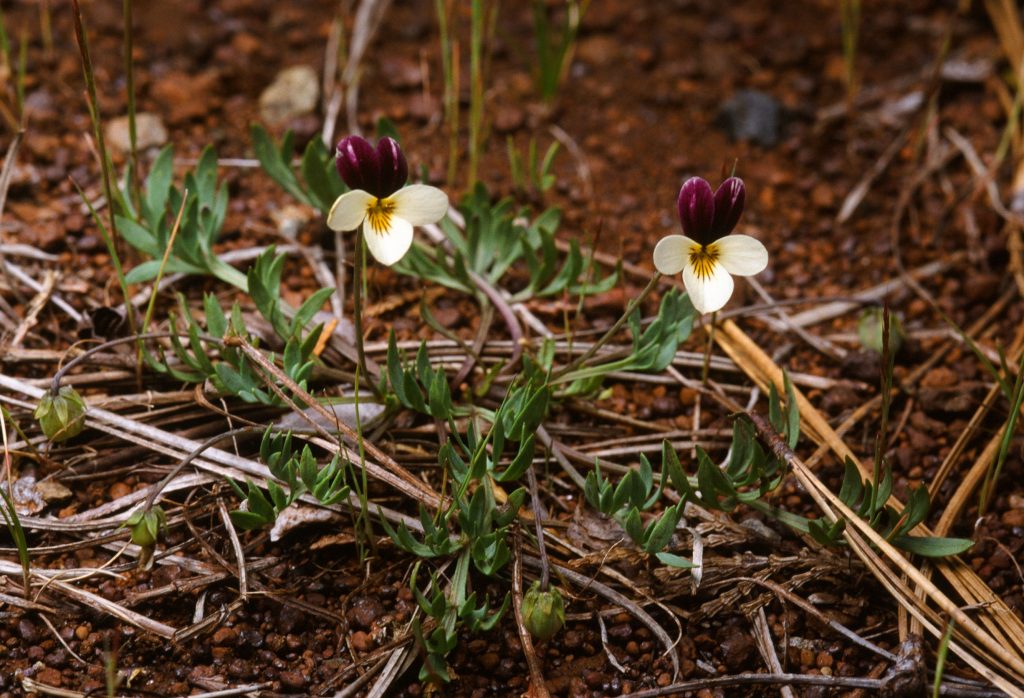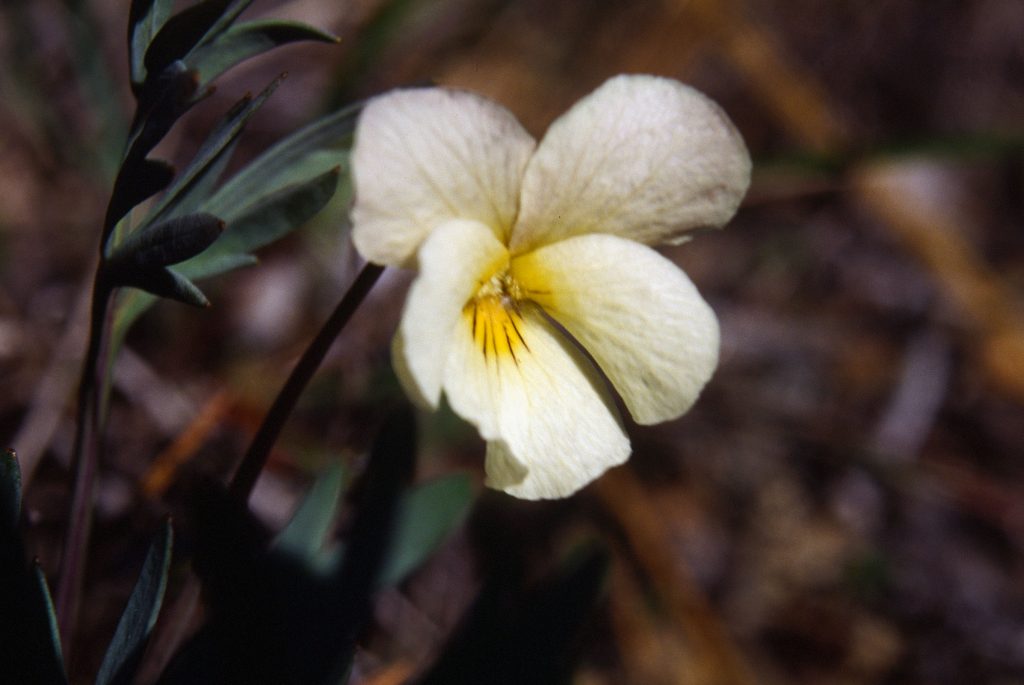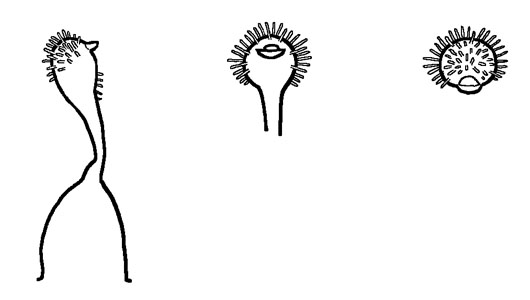Viola hallii
Description. Illustrations: 3 photographs of Viola hallii and 2 drawings

This rare violet species is classified in the subsection Chrysanthae, very closely related to V. beckwithii, however the plants of V. hallii are completely glabrous, the divided leaves are pale green and the flowers more rounded. Its two upper petals are dark velvety violet to purple-black and the lower three cream to pale yellow. The central yellow eye is a darker, more golden color. There is a less common flower form of this species showing all petals as pale yellow. It is found only on serpentine soils, in northwestern California and southwestern Oregon, in the coastal ranges.

As with other species of this subsection, development of newly germinating plants to flowering stage takes several years because they have such a short growing season, becoming dormant for the dry summer months. The crown of the plants is many centimetres underground to protect the growing tip from climatic extremes. Short, stout, rhizomes bear a cluster of tough roots. The stems of V. hallii are often more elongated than other species of the section, therefore not always appearing stemless, though the above-ground plant is still short and purple colored.

Basal and cauline leaves are sometimes tinged purple, the blade longer than wide, ovate to deltate in outline, 6.5 cm long. It is deeply cut ternately (into three) or pinnately with a longer central division, the upper segments being usually cut into three again; leaf segments are lanceolate to linear and curling upwards, the veins indistinct though the central vein may be purple and with a dark gland at the tip of each segment. There are usually leaves two or three bsal leaves, their petioles twice as long as the cauline petioles; fibrous stipules that are almost completely adnate to the underground portion of the petiole, wrapped protectively around the stems. The above-ground portion of the petioles and seed peduncles become decumbent as the plants go to seed. Cauline stipules are marginally toothed or entire, partly adnate, 1.3 cm long.
Blooms appear in early spring, on axillary peduncles that exceed the height of the leaves. Bracteoles are tightly adpressed to the upper half of the peduncle, 1.0-1.5 mm long. The fragrant flowers are 2.2×2.0 cm, the two upper petals deep violet-purple to almost black, on both sides, as with V. beckwithii, often twisted back to back. Three lower petals are cream to pale yellow, with a dark golden to orange-yellow central triangular patch, on base of three lowest petals; hairs on the lateral petals are clavate; the lowest spurred petal wider than the other four petals, indented to truncate at the end and with short dark-purple guidelines on the yellow background; the spur is 1.0-1.5 mm long x 2 mm wide, yellow; the style head covered on top, back and sides with short hairs. The calyx 0.7 cm long, sepals short, little purple, more on appendages.

The plants of Viola hallii die down as soon as they have produced seeds from their open flowers, and there are no cleistogenes. Seed capsules are spotted purple, elliptical, 4–12 mm long; seeds are large, pale brown, 1.7 x 3.5 mm.
Endemic to serpentine gravel in open sunny locations, this species seems to require slightly cooler conditions than V. beckwithii and V. trinervata. Winter and spring precipitation and local springs keep these areas from completely drying out in summer. V. hallii grows in the same locations as V. cuneata. A fuller description of their serpentine habitat is given under the description of the latter. In cultivation its summer dormancy requires a controlled degree of moisture; excellent drainage is essential but desiccation is fatal.
Range: Del Norte, Humboldt, Lake, Mendocino, Shasta, Siskiyou, Tehama, and Trinity counties of California; Douglas, Josephine and Jackson, Klamath, Lane and Polk counties in Oregon. Altitude 300-2100 m.

Nomenclature & Taxonomy
Sect. Chamaemelanium subsect. Chrysanthae (Clausen, 1964).
- hallii A. Gray, Proc. Am. Acad. 8: 377, 1872. Type: Salem, Ore., 1871.
A 12-ploid species: n=36; 2n=12x=72, where x=6 is the base chromosome number. (Gershoy, 1932).
It was first collected in the grounds of Willamette University, Salem, Oregon and recognized as a new violet by Mr. Elihu Hall, a professor of that institution. These specimen plants were sent to Dr. Asa Gray of Harvard University, who named them in honor of Professor Hall.